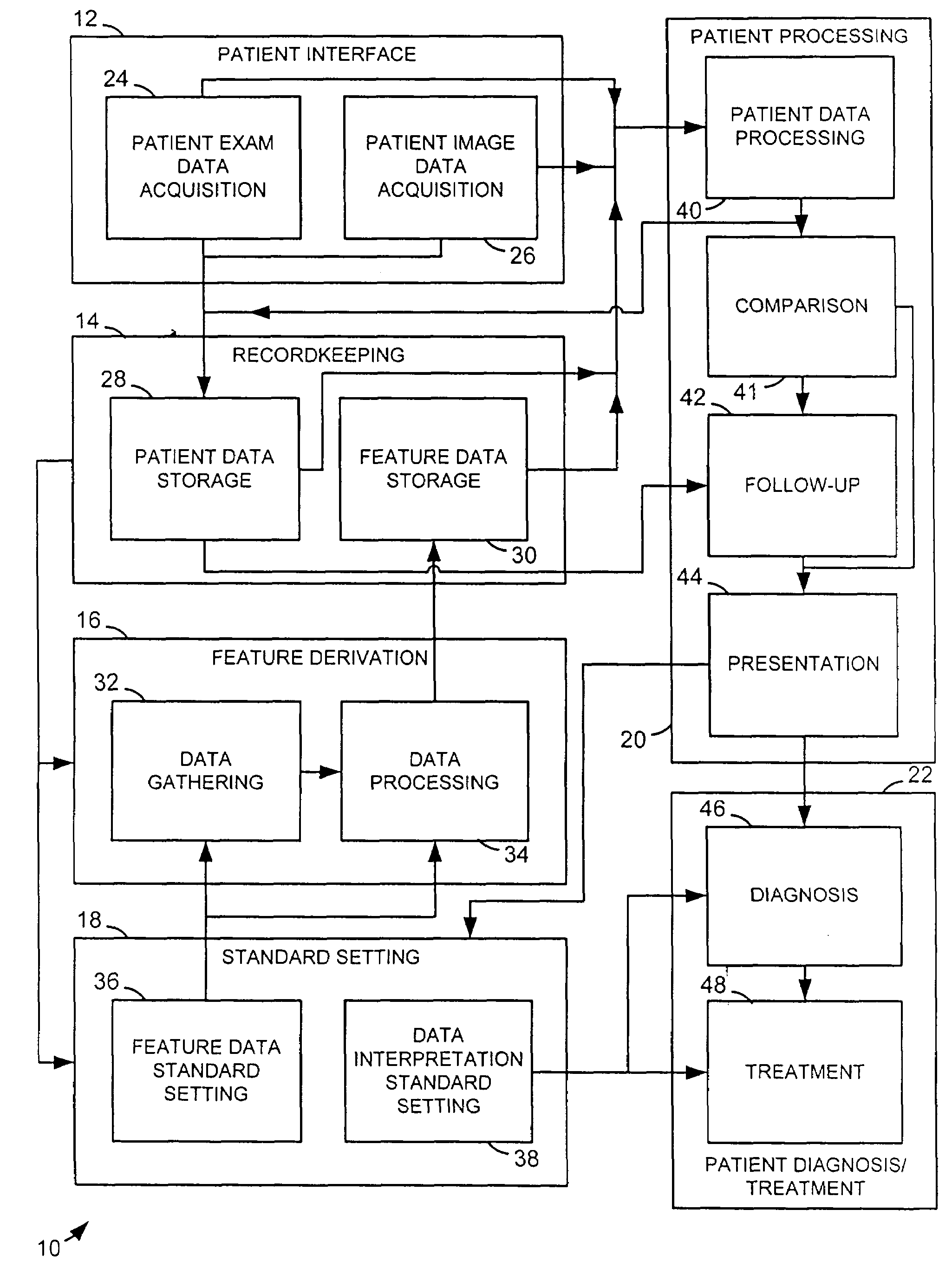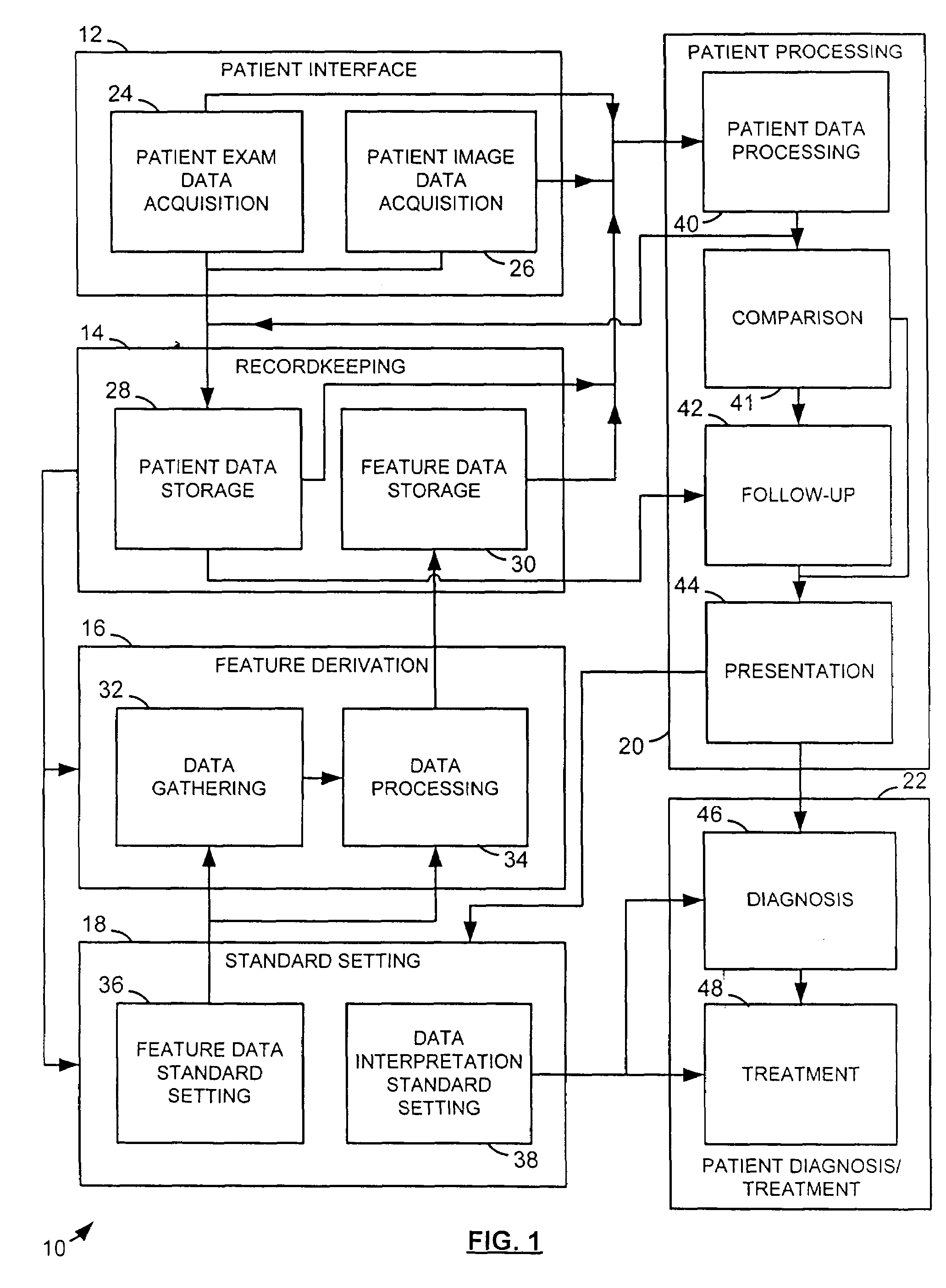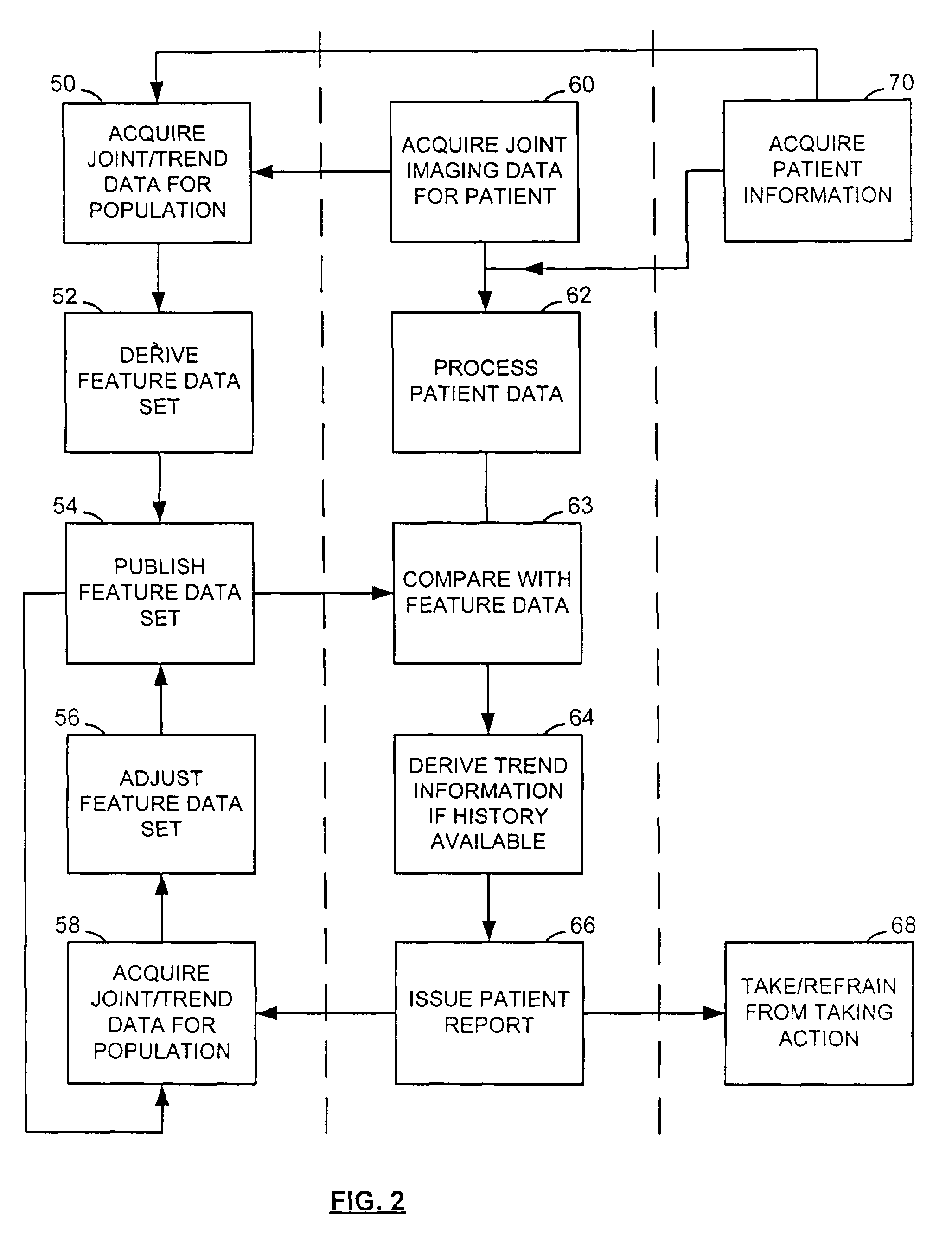Non-invasive joint evaluation
a joint evaluation and non-invasive technology, applied in the field of non-invasive joint evaluation, can solve the problems of progressive loss of joint function, increased frequency and intensity of pain, and serious disability, and achieve the effects of reducing costs, reducing pain, and enhancing the amount of information available from patient images
- Summary
- Abstract
- Description
- Claims
- Application Information
AI Technical Summary
Benefits of technology
Problems solved by technology
Method used
Image
Examples
example
[0058]The following example illustrates an approach to designing a system intended to allow for the assessment and diagnosis of osteoarthrisis (OA) using MRI cartilage layer thickness measurements. Although diagnosis based on cartilage thickness progression could still be made more precise, promising results have been obtained using the concept of normal joint templates. This approach employs a normalizing procedure that allows for the comparison of patient thickness maps to normal templates. Scaled difference maps can then be generated depicting cartilage deficit with respect to the normal reference.
[0059]To enable diagnosis based on normalized thickness for a particular patient, a decision rule is defined on the basis of synthetic quantitative parameters. One possibility is to compute the fraction of articular surface for which the scaled deficit exceeds a given threshold. The pathology severity could be related to this value and classes could be defined using different fraction t...
PUM
 Login to View More
Login to View More Abstract
Description
Claims
Application Information
 Login to View More
Login to View More - R&D
- Intellectual Property
- Life Sciences
- Materials
- Tech Scout
- Unparalleled Data Quality
- Higher Quality Content
- 60% Fewer Hallucinations
Browse by: Latest US Patents, China's latest patents, Technical Efficacy Thesaurus, Application Domain, Technology Topic, Popular Technical Reports.
© 2025 PatSnap. All rights reserved.Legal|Privacy policy|Modern Slavery Act Transparency Statement|Sitemap|About US| Contact US: help@patsnap.com



